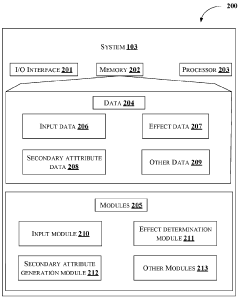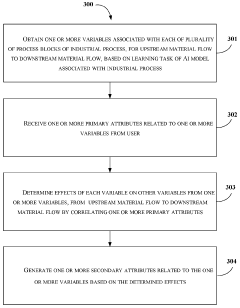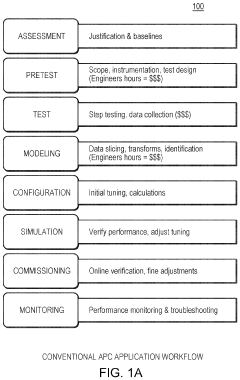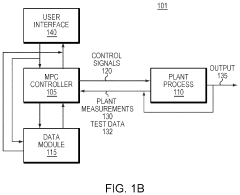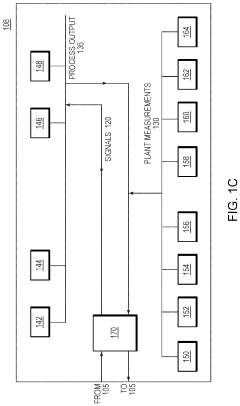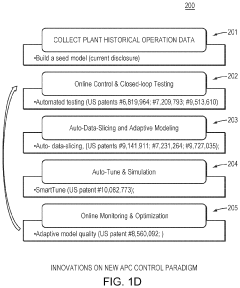The Influence of AI on Cellophane Manufacturing Processes
AI in Cellophane: Background and Objectives
Cellophane, a transparent film made from regenerated cellulose, has been a staple in packaging and manufacturing industries for decades. The evolution of this material has been closely tied to advancements in production technologies. In recent years, the integration of Artificial Intelligence (AI) into cellophane manufacturing processes has marked a significant turning point in the industry's development trajectory.
The primary objective of incorporating AI into cellophane production is to enhance efficiency, improve quality control, and reduce waste. This technological integration aims to address longstanding challenges in the manufacturing process, such as inconsistencies in film thickness, optical clarity variations, and production line inefficiencies. By leveraging AI's capabilities in data analysis, pattern recognition, and predictive modeling, manufacturers seek to optimize every stage of the cellophane production cycle.
Historically, cellophane manufacturing has relied heavily on human expertise and traditional control systems. The introduction of AI represents a paradigm shift, offering the potential for real-time adjustments, predictive maintenance, and adaptive process control. This transition aligns with broader Industry 4.0 initiatives, where smart manufacturing principles are reshaping production landscapes across various sectors.
The technological evolution in cellophane production can be traced through several key milestones. From the initial discovery of regenerated cellulose films in the early 20th century to the development of continuous production methods, each advancement has contributed to improved product quality and manufacturing efficiency. The integration of AI marks the latest chapter in this ongoing evolution, promising to revolutionize how cellophane is produced and utilized.
As we explore the influence of AI on cellophane manufacturing, it's crucial to consider the broader implications for the packaging industry and related sectors. The potential for AI to drive innovation in material science, process optimization, and sustainable manufacturing practices extends far beyond cellophane production. This technological convergence opens up new possibilities for creating smarter, more responsive, and environmentally friendly packaging solutions.
The objectives of implementing AI in cellophane manufacturing are multifaceted. They include achieving greater precision in film thickness control, enhancing optical properties through advanced monitoring systems, and optimizing resource utilization to minimize environmental impact. Additionally, AI-driven predictive maintenance aims to reduce downtime and extend the lifespan of manufacturing equipment, contributing to overall operational efficiency and cost-effectiveness.
Market Demand Analysis for Smart Cellophane Production
The global cellophane market is experiencing a significant shift towards smart manufacturing processes, driven by the increasing demand for sustainable packaging solutions and the need for improved efficiency in production. As consumers become more environmentally conscious, there is a growing preference for biodegradable and compostable packaging materials, which has led to a resurgence in the use of cellophane. This trend is further amplified by stringent regulations on single-use plastics in many countries, positioning cellophane as a viable alternative.
The integration of AI in cellophane manufacturing processes is expected to address several key market demands. Firstly, there is a strong need for enhanced quality control and consistency in cellophane production. AI-powered systems can analyze real-time data from production lines, detecting defects and variations with greater accuracy than traditional methods. This improvement in quality assurance is crucial for meeting the stringent standards of industries such as food packaging and pharmaceuticals.
Secondly, the market is demanding increased production efficiency and reduced waste. AI algorithms can optimize production parameters, predict maintenance needs, and streamline supply chain operations, leading to significant cost savings and improved resource utilization. This is particularly important as manufacturers seek to balance the higher costs of eco-friendly materials with competitive pricing strategies.
The customization of cellophane products is another growing market demand that AI can address. With the rise of personalized packaging in various industries, AI-enabled manufacturing processes can facilitate rapid prototyping and small-batch production runs, allowing for greater flexibility in meeting diverse customer requirements.
Furthermore, there is a substantial market opportunity in developing smart packaging solutions using cellophane. AI can enable the integration of sensors and intelligent features into cellophane packaging, providing real-time information on product freshness, authenticity, and supply chain tracking. This aligns with the increasing consumer demand for transparency and traceability in product packaging.
The adoption of AI in cellophane manufacturing also addresses the market's need for sustainable production practices. By optimizing energy consumption, reducing material waste, and improving overall production efficiency, AI contributes to lowering the environmental impact of cellophane manufacturing, which is a critical factor for eco-conscious consumers and brands alike.
In conclusion, the market demand for smart cellophane production is driven by the need for superior quality, increased efficiency, customization capabilities, intelligent packaging solutions, and sustainable manufacturing practices. The integration of AI in cellophane manufacturing processes is poised to meet these demands, potentially revolutionizing the industry and opening up new market opportunities in the coming years.
Current AI Applications in Cellophane Manufacturing
Artificial Intelligence (AI) has made significant inroads into the cellophane manufacturing industry, revolutionizing various aspects of the production process. One of the most prominent applications is in quality control and inspection. AI-powered computer vision systems are now capable of detecting defects and inconsistencies in cellophane sheets with unprecedented accuracy and speed. These systems can identify minute imperfections that might be missed by human inspectors, ensuring higher product quality and reducing waste.
In the realm of process optimization, AI algorithms are being employed to analyze vast amounts of production data in real-time. These systems can identify patterns and correlations that lead to improved efficiency and reduced energy consumption. For instance, machine learning models can predict optimal machine settings based on various input parameters, such as raw material properties and environmental conditions, resulting in more consistent product quality and reduced downtime.
Predictive maintenance is another area where AI is making a significant impact. By analyzing sensor data from manufacturing equipment, AI systems can predict potential failures before they occur. This proactive approach allows manufacturers to schedule maintenance activities more efficiently, minimizing unexpected downtime and extending the lifespan of critical machinery.
AI is also being utilized in supply chain management for cellophane production. Advanced forecasting models powered by machine learning can more accurately predict demand, helping manufacturers optimize inventory levels and reduce costs. These systems can take into account a wide range of factors, including historical sales data, market trends, and even social media sentiment, to provide more accurate predictions.
In the realm of product development, AI is accelerating the process of creating new cellophane formulations with specific properties. Machine learning algorithms can rapidly analyze the relationships between different material compositions and their resulting properties, enabling researchers to explore a wider range of possibilities in a shorter time frame.
Robotics and automation, enhanced by AI, are increasingly being integrated into cellophane manufacturing processes. AI-guided robotic systems can perform complex tasks with greater precision and consistency than human operators, particularly in areas such as material handling and packaging. These systems can adapt to changes in production requirements more quickly, improving overall manufacturing flexibility.
Lastly, AI is playing a crucial role in energy management within cellophane manufacturing facilities. Smart systems can optimize energy usage across the production line, adjusting parameters in real-time to minimize waste and reduce the overall carbon footprint of the manufacturing process. This not only leads to cost savings but also aligns with growing environmental concerns and regulations in the industry.
Existing AI Solutions for Cellophane Manufacturing
01 Viscose process for cellophane production
The viscose process is a common method for manufacturing cellophane. It involves dissolving cellulose in alkali and carbon disulfide to form viscose, which is then extruded through a slit into an acid bath to regenerate the cellulose. This process results in a thin, transparent film that can be used for various packaging applications.- Viscose process for cellophane production: The viscose process is a common method for manufacturing cellophane. It involves treating cellulose with alkali and carbon disulfide to form a viscose solution, which is then extruded through a narrow slit into an acid bath. This process regenerates the cellulose into a thin, transparent film known as cellophane.
- Extrusion and casting techniques: Cellophane can be manufactured using extrusion and casting techniques. The cellulose solution is extruded through a die or cast onto a moving belt, followed by coagulation and regeneration processes. These methods allow for precise control of film thickness and properties.
- Surface treatment and coating processes: Various surface treatments and coating processes are employed to enhance the properties of cellophane. These may include the application of moisture-resistant coatings, anti-static treatments, or heat-sealable layers to improve the functionality and versatility of the cellophane film.
- Continuous production methods: Continuous production methods have been developed for efficient large-scale manufacturing of cellophane. These processes involve a series of interconnected steps, from raw material preparation to final film formation, allowing for uninterrupted production and improved consistency in the final product.
- Eco-friendly cellophane production: Recent developments in cellophane manufacturing focus on more environmentally friendly processes. These include using sustainable cellulose sources, reducing harmful chemical usage, and implementing closed-loop systems to minimize waste and environmental impact while maintaining product quality.
02 Extrusion and casting techniques
Cellophane can be manufactured using extrusion and casting techniques. The cellulose solution is extruded through a die or cast onto a moving belt, followed by coagulation and regeneration processes. These methods allow for precise control of film thickness and properties, resulting in high-quality cellophane sheets.Expand Specific Solutions03 Surface treatment and coating processes
Various surface treatment and coating processes are employed to enhance the properties of cellophane. These may include the application of moisture-resistant coatings, heat-sealable layers, or anti-static treatments. Such modifications improve the functionality and versatility of cellophane for different packaging applications.Expand Specific Solutions04 Biodegradable cellophane production
Recent developments in cellophane manufacturing focus on producing biodegradable variants. These processes often involve the use of modified cellulose sources or the incorporation of biodegradable additives to enhance the environmental sustainability of the final product while maintaining its desirable properties.Expand Specific Solutions05 Continuous production and automation
Modern cellophane manufacturing processes emphasize continuous production and automation. These systems integrate various stages of production, from raw material preparation to final product packaging, to improve efficiency and consistency. Advanced control systems and sensors are used to monitor and adjust process parameters in real-time.Expand Specific Solutions
Key Players in AI-Enabled Cellophane Production
The AI influence on cellophane manufacturing processes is in its early stages, with the market showing potential for significant growth. The technology's maturity varies among key players, with companies like ABB Group, Siemens Corp., and IBM leading in industrial automation and AI integration. Emerging players such as Koidra, Inc. and Quantiphi, Inc. are focusing on specialized AI solutions for manufacturing. The competitive landscape is diverse, including established industrial giants and innovative startups, indicating a dynamic market with opportunities for technological advancements and process optimizations in cellophane production.
ABB Group
Siemens Corp.
Core AI Innovations in Polymer Film Production
- A method and system that obtain variables from process blocks for upstream and downstream material flows, receive primary attributes from users, and determine effects to generate secondary attributes, enriching data for AI model training by correlating these attributes, thus reducing preparation time and improving coordination between experts.
- A computer-implemented method and system utilizing artificial intelligence (AI) and machine learning (ML) techniques to build a 'seed-model' from historical plant data, automating the identification of process variables, data cleansing, and model configuration, allowing for the creation of a working dataset and subsequent MPC model, thereby reducing the need for traditional pre-testing and minimizing production disruptions.
Environmental Impact of AI in Cellophane Production
The integration of Artificial Intelligence (AI) in cellophane manufacturing processes has significant implications for environmental sustainability. AI-driven optimization of production workflows can lead to substantial reductions in energy consumption and waste generation. Advanced machine learning algorithms can analyze real-time data from production lines, enabling precise control of temperature, pressure, and chemical reactions. This level of control minimizes raw material waste and reduces the energy required for production, resulting in a smaller carbon footprint for cellophane manufacturing facilities.
AI-powered predictive maintenance systems play a crucial role in preventing equipment failures and unplanned downtime. By anticipating maintenance needs, these systems help avoid sudden shutdowns that often lead to material waste and energy-intensive restart procedures. This proactive approach not only improves operational efficiency but also reduces the environmental impact associated with unexpected production interruptions.
The application of AI in quality control processes further contributes to environmental benefits. Computer vision systems and machine learning models can detect defects in cellophane with higher accuracy and consistency than traditional methods. This enhanced quality control reduces the amount of substandard product that would otherwise be discarded, thereby minimizing waste and conserving resources.
AI algorithms can also optimize supply chain logistics for cellophane production. By accurately forecasting demand and streamlining transportation routes, AI helps reduce excess inventory and minimize fuel consumption in product distribution. This results in lower greenhouse gas emissions associated with the transportation of raw materials and finished cellophane products.
Furthermore, AI-driven research and development efforts are accelerating the discovery of more environmentally friendly materials and production methods for cellophane. Machine learning models can rapidly analyze vast datasets of molecular structures and processing techniques, potentially leading to the development of biodegradable alternatives or more sustainable production processes.
However, it is important to consider the environmental impact of the AI infrastructure itself. The energy consumption of data centers and computing resources required to run complex AI models must be factored into the overall environmental assessment. As AI technologies continue to advance, there is a growing emphasis on developing more energy-efficient algorithms and hardware to mitigate this concern.
In conclusion, while the implementation of AI in cellophane manufacturing processes offers significant potential for reducing environmental impact through improved efficiency and waste reduction, a holistic approach is necessary to ensure that the benefits outweigh the environmental costs of AI infrastructure. As the technology evolves, ongoing research and development efforts are likely to further enhance the positive environmental outcomes of AI integration in cellophane production.
Cost-Benefit Analysis of AI Integration in Cellophane Industry
The integration of AI technologies into cellophane manufacturing processes presents a complex landscape of costs and benefits that require careful analysis. Initial implementation costs for AI systems can be substantial, including hardware investments, software licensing, and the development of custom algorithms tailored to specific manufacturing processes. These upfront expenses may pose a significant barrier for smaller manufacturers, while larger companies may find them more manageable within their capital expenditure budgets.
However, the long-term benefits of AI integration can potentially outweigh these initial costs. AI-driven process optimization can lead to significant reductions in raw material waste, energy consumption, and production time. For instance, machine learning algorithms can fine-tune production parameters in real-time, resulting in more consistent product quality and fewer defects. This not only reduces material costs but also minimizes the need for rework or product recalls, thereby improving overall operational efficiency.
Labor costs represent another area where AI integration can yield substantial benefits. While there may be initial costs associated with training staff to work alongside AI systems, the long-term outlook suggests a reduction in labor-intensive tasks. AI can automate quality control processes, monitor equipment performance, and predict maintenance needs, potentially reducing the number of workers required for these functions. However, this shift may necessitate investment in upskilling programs to transition workers into roles that complement AI capabilities.
Energy efficiency improvements facilitated by AI can lead to significant cost savings in cellophane manufacturing. Intelligent systems can optimize energy usage across the production line, adjusting parameters based on real-time data to minimize waste. This not only reduces operational costs but also aligns with growing environmental regulations and consumer demand for sustainable manufacturing practices.
The impact of AI on product quality and consistency can have far-reaching financial implications. By reducing variability in the manufacturing process, AI can help cellophane producers meet stringent quality standards more consistently. This can lead to improved customer satisfaction, potentially commanding premium prices and securing long-term contracts with quality-sensitive clients.
Maintenance and downtime costs are another area where AI can provide substantial benefits. Predictive maintenance algorithms can analyze equipment performance data to forecast potential failures before they occur, allowing for scheduled maintenance that minimizes production disruptions. This proactive approach can significantly reduce unplanned downtime, which is often one of the most costly aspects of manufacturing operations.
In conclusion, while the initial costs of AI integration in cellophane manufacturing can be substantial, the potential for long-term cost savings and operational improvements is significant. Companies must carefully weigh these factors against their specific operational context, market position, and financial capabilities to determine the optimal strategy for AI adoption in their manufacturing processes.


